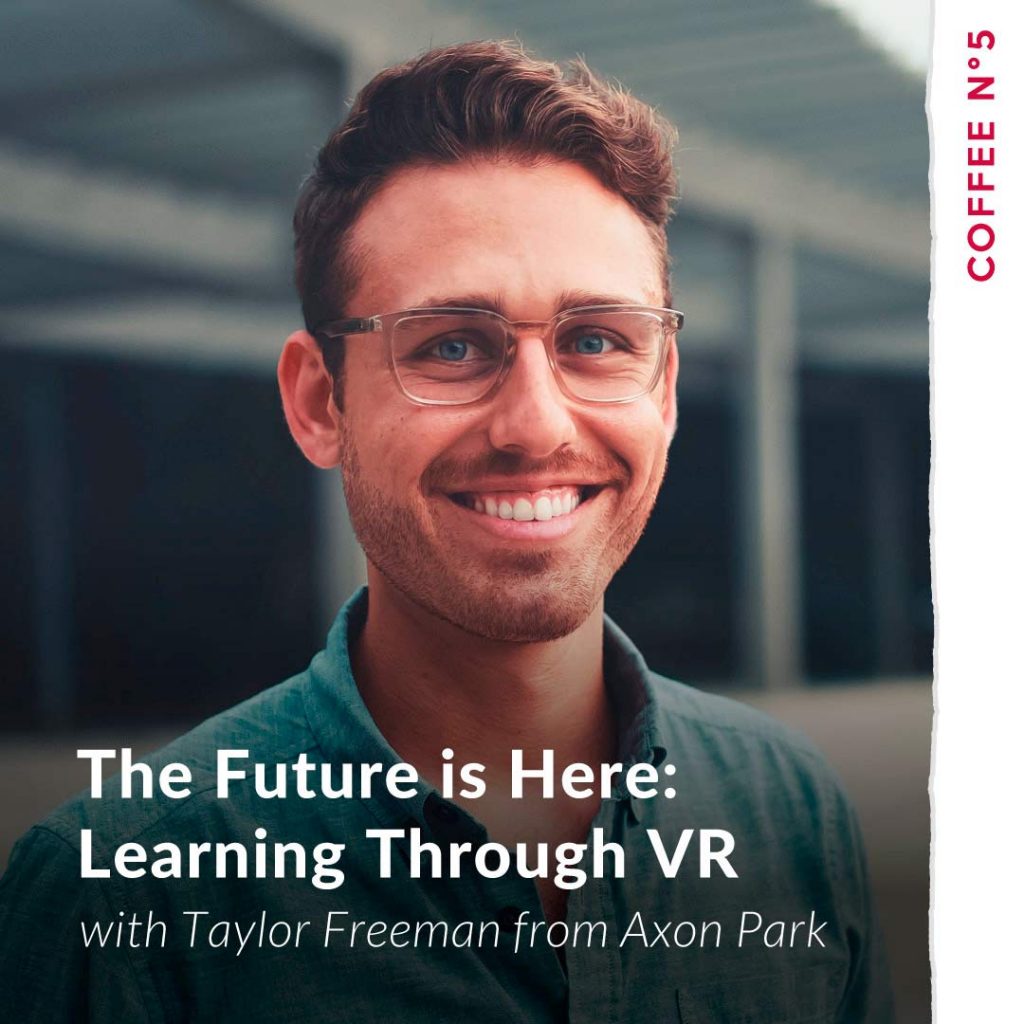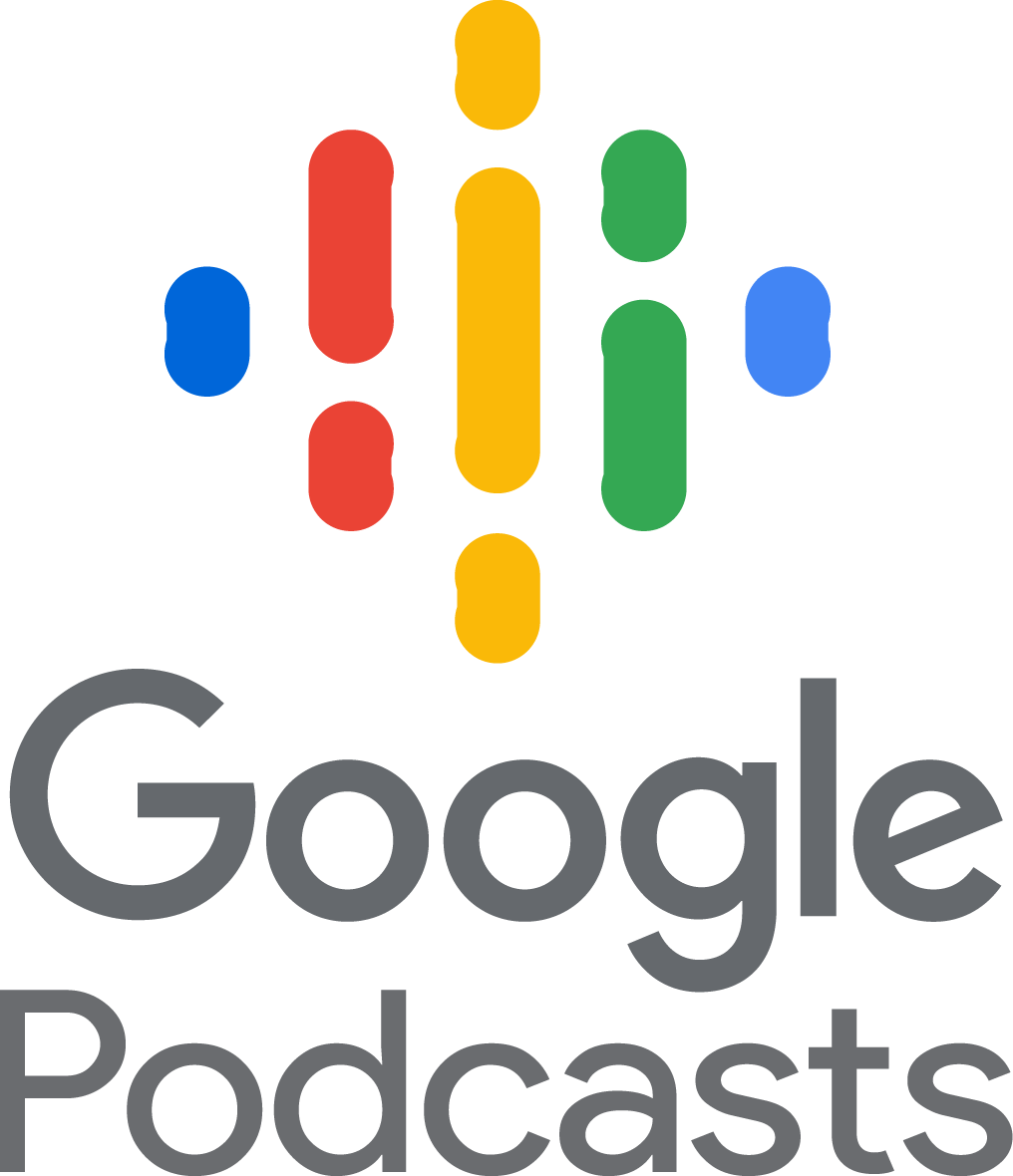SPEAKERS
Taylor Freeman, Lara Schmoisman
Lara Schmoisman
This is Coffee Nº 5, I’m your host, Lara Schmoisman. Hi, Taylor, thank you for being here drinking some coffee with me this afternoon.
Taylor Freeman
Thank you so much for the invitation.
Lara Schmoisman
So how did you get here where you are right now? Give me a brief story of your life, because… is thi what you want to be when you were a kid?
Taylor Freeman
Well, I always knew that I wanted to be entrepreneurial, I loved the idea of creating things out of nothing out of just ideas. And when I was younger, I was very interested in technology, specifically in hardware. So cell phones and computer parts and cars. And just anything that was mechanical, I was really fascinated by
Lara Schmoisman
just like my son.
Taylor Freeman
Yeah, the Yeah, like your your son who’s into programming. And so my, my journey sort of led me to experiment with building computers, and to just really get deep into that world. And then through high school, and in the years after, I started to sort of shift away from that a little bit and being a little bit more focused on creativity. So music and design. And that led me to start a design firm, and a marketing, branding web development company, that I started just as myself as a consultant, and just started working on helping entrepreneurs build a presence online, which I just love to be able to have that sort of again, from nothing to something and to help someone.
Lara Schmoisman
Yeah, I think I know something about that.
Taylor Freeman
Yeah, I think you from everyone definitely know a lot about that. So yeah, so I followed that path. And in 2014, I had an opportunity to try a VR headset. And that was the moment that completely just changed my entire life. That was the aha moment literally the second that I tried it. And since that point, I haven’t looked back. And I’ve just done everything that I can to really support the VR ecosystem. And as of early 2019, started to look at the education space within VR, because it’s just such an incredibly powerful tool for learning. So that’s brought me to where I am today. And now that’s my full focus
Lara Schmoisman
The thing is that you didn’t go for a straightforward location, let’s go after schools, and let’s say teach the kids some math or something interactive, yeah, via one for something like out there and unique. So how did you find out that there was a need for that? I mean, you have to explain what you do, because I don’t mess it up. So you explain about your endeavor first.
Taylor Freeman
Yeah, sure. So high level, what we’re focused on is creating what we call Axon Park, which is a virtual campus that exists in VR. So there’s actually a fun little backstory around it, which is that in the future, the first sentient AI is born out of this open source project called the Neo Mind Project. And the AI starts to call itself Axon and Axon creates this virtual campus in VR so that students from around the world can teleport in to learn new skills. And so Axon is actually a tutor that’s living in VR, that is talking to the students and teaching them. And ideally, over time, we’re going to be making this AI very sentience. So it really feels like you’re talking with a tutor, it will be translated into many different languages in real time, using all of this machine learning technology around real time translation, and ultimately providing in the next decade, this destination where people can teleport into learn anything from a tutor. Oh, my God. And I saw some picture of Axon. I mean, you can see it on your website, too. And it’s so pretty, it’s so futuristic. Thank you. Thank you. Yeah, we’re trying to blend making it professional, but also fun and futuristic. So that we kind of have that that balance.
Lara Schmoisman
So how can you find out that there was a need for this kind of program and this theater or because right now you’re going for a very specific niche, which is in the medical field. How did you come up with this concept that this was needed?
Taylor Freeman
So there’s been a large body of work coming out recently, studies and publications around the efficacy of virtual and augmented reality for training, specifically within the medical space. So there are some just incredible case studies. For example, a company called OSSO VR, they did a study where they worked with a group of surgical students, they broke them into two groups, one worked with VR, the other did traditional classroom based learning. And then they had the VR group go into a simulated lab and conduct the surgical procedure that they had just learned in VR, and 83% of them, were able to complete the surgery. And then they did the same thing with the group that learned in the classroom and not a single one. 0% were able to complete it. So
Lara Schmoisman
that’s incredible, it gives me chills.
Taylor Freeman
Yeah, I mean, it’s just you have the same amount of time. But in one your hands on, you’re reaching in, you’re grabbing the tool, you’re actually physically doing the procedure. And then the other you’re sort of having this abstract concept that’s been distilled from reality into a two dimensional display.
Lara Schmoisman
let’s make it clear. It’s not like playing operation,
Taylor Freeman
Right. No, it’s it’s very high fidelity. Very, very realistic. I mean, the thing that you don’t get with VR is the feeling the haptics and that’s something that’s very important, right? If you’re performing a surgical procedure, and you’re drilling into a bone, the haptics about experience, what that feels like, is so important. So the technology can only go so far, you still need to have some real experience. But in terms of learning sequence learning process, it is like a flight simulator, right? You can learn how to turn the switches you learn exactly what dials to control, what charts to be monitoring, and then when you step into the plane, you know exactly what to do, it might feel a little bit harder to flip a switch or to turn one of the controls, but you know exactly what to do. And that’s kind of how we think about this with medical training.
Lara Schmoisman
There’s any concern about… because for medical training, for example, or a doctor is really important than bedside manners. I mean, I know that when I need to choose a physician, I want someone who has a good bedside manners. So how can you implement that part in VR, like the more human part?
Taylor Freeman
Yeah, so there’s interesting work happening with soft skills training. in VR, there’s a company called Talespin, one of my favorite VR companies, and they’ve developed this virtual human technology, so you’re able to actually speak with an AI system. And it responds to you based on what you’re saying. And they use it for soft skills training across a wide range of, of industry. So in terms of learning those softer skills, VR has certainly has a place, the area that we’re most focused on, is really around the sequence driven, procedural skills that you need, right? When you’re going through, you know, required procedures, there are a certain number of steps, you know, and one of our most recent trainings, it’s 31, unique steps, you have to do each of the steps in perfect order. If you think about the number of possible variations, it’s like trillions, right beyond trillions of potential variations.
Lara Schmoisman
But in real life, you have interruptions, you have other people that you need to interact with, as you do the steps. How this training affects the real life? Because when you do this training, you do it without interruptions, or you are contemplating those in the program as well.
Taylor Freeman
That’s a really, really fantastic question. And we’ve played with that concept we’ve played with the idea of someone running in screaming through the VR experience of you, you’re just distracted. And the the way that we approached that, that problem and challenge with with our experiences, is specifically just to create time pressure, we’ve found that that is a very effective tool. But in terms of these random events that happen and sort of throw you a curveball, that’s something that we are exploring, but we haven’t implemented yet. But yeah, something like a physician running in and say, Hey, I need this or, you know, the intercom, starting to talk to you using the machine learning to actually say your name. So it’s really distracting you and, you know, it is a super important,
Lara Schmoisman
I didn’t know that the one I’m working there, so many things happening at the same time. And I’m multitasking and interrupting. So it will be defeating the purpose, if I just do something and only can focus on that. And I think it’s fantastic feel you’re going to be groundbreaking if you do that. I gonna be saying that I say that for us. Anyway. So what ishes video find in the way of creating this program, what elements were more complex to create, in order to be real or feel real? because as you said that they have limitations
Taylor Freeman
Yeah. So sometimes it’s helpful to think about this training on a continuum. So on one side, you have traditional digital asynchronous training, which would be something like looking at a PDF document, or watching a video, it’s on a flat screen, it’s not really interactive, you’re just sort of getting hit with the information. Then on the other side of the spectrum, you have physical practice, where you’re standing at a table, you have all the equipment in front of you, you’re actually doing the procedure, VR sort of fits right in the center a little bit closer toward the physical real interaction. And so with that said, again, the haptics component, the physical touch of, for example, in one of our experiences, you have to mold the nose piece of the respirator over your nose. And when you’re in VR, you kind of just put your hands up you see a little animation of the the nosepiece molding, but in real life, of course, that’s going to feel different, just like the flight simulator where you know what foot, what switch to flip, but when you do it Wow, that’s a little bit more difficult or that’s easier than I thought. Right? So
Lara Schmoisman
yeah, and that is actually real, you can catch it.
Taylor Freeman
Can you explain the difference between VR and AR? And yeah, so that that was an initial challenge and sort of thing that we were exploring. But what we found is a sweet spot for this training is really just teaching sequence. So making it very clear that this is not designed to replace in person training. But what it is designed to do is ensure that the learner can truly perform the sequence, which is the issue, most of the time, when you look at the studies, a lot of these mistakes are made on sequence. It’s not that they’re, you know, when they I mean, there are a lot of incorrect uses of the equipment as well. But a huge issue, majority issue. And a lot of these studies is just sequence people forgetting items, people doing them out of sequence, which can lead to real consequences. So that’s been our initial approach. And in terms of other challenges with VR and AR, you know, I’m not sure you know, your listeners, I’m not sure how much experience they’ve had with VR and AR, but essentially Of course, yeah. And so again, going back to this continuum model, on on one side, you have virtual reality, VR, which is, every single photon, every single piece of light that comes into your eye is virtual, you don’t see any of the real world, it’s all simulated. So that’s VR, virtual reality. Then on the other side, you have augmented reality, which, in its most basic form, could just be one little piece of digital information floating on top of the real world. And then there’s this whole expanse in between. And so a lot of people in the VR industry has sort of adopted this term XR, which there’s still debate as to what XR really means. But, but the idea is that it’s a catch all term for virtual reality, augmented reality, mixed reality, anything that’s spatial computing, that takes the idea of information and data, and then understands the 3d space and places that information into that 3d space. And so eventually, a decade from now, I hope, we’ll have glasses that are sort of like, my glasses here, very lightweight, you know, they have to be fashionable if people are wearing them. And yeah, not to say that these are fashionable, I really need to, I need to upgrade these things. But basically, that you’ll be able to have the full spectrum. So if in one experience, you need fully immersive, you need to teleport to a completely different place for the training, your glasses can do that. And then on the other side, if you’re in the operating room, or if you’re driving a car, maybe you just need to have the vitals of the patient floating there next year. Or maybe you just need to have the GPS of when your next turn is coming. And so there’s this whole spectrum of, again, virtual reality being fully immersive, you’re fully teleporting to a different world, that’s entirely virtual. And then the other side,
Lara Schmoisman
it could be…it could be dangerous, also, because what if you teleports in the wrong time or to the wrong place when you’re driving?
Taylor Freeman
Yeah, I mean, there’s, there’s a lot of, there’s a lot of weird things that could happen with this, you know, hopefully, there will be really good protective measures. But, you know, there will be some headline in the future, unfortunately.
Lara Schmoisman
I mean, I can say, certainly that you are a visionary, because you’re seeing the future. And you are, we’re talking about 10 years from now. But for example, what did you think when you saw Back to the Future?
Taylor Freeman
I mean, I love science fiction. And actually, there’s this book, I’m just gonna, I’m gonna plug this book or like, like, so I just got this. It’s so Ready Player One, was this really seminal VR
Lara Schmoisman
Oh, my God, we all love in this household Ready Player One
Taylor Freeman
So this is the this is the sequel. So this is Ready Player Two. And I mean, it just sparked my memory, because they talk a lot about Back to the Future in there. And it’s a lot of 80s culture. And I mean, I, I just love the idea of looking at science fiction, and then that becomes reality. Right? I mean, you look at Minority Report, for example, from the augmented reality displays and the natural hand based interaction and that stuff is coming to life. And so it’s these precursors to the future. So I just I love seeing all of this because I know that it’s foreshadowing for what’s to come.
Lara Schmoisman
I know. But look at this, what happened in Back to the Future with with we all thought it was so cool. And it was all big. Everyone thought they will be big screens. And actually, we’re going to small screens every time. So how true you think that this virtual reality is going to be real, and it’s going to be… a future because there are a lot of people that they say, oh, virtual reality is gone. That’s it. It’s a gimmick. And I heard that. They say that people said that, like By this time, we will have flying cars, and that’s not happening. So what do you think that is that the path or the real future of XR and how it’s going to be developing in the next few years?
Taylor Freeman
so I love this question. And there, there are two paths, right? one path is I love to send people the articles and headlines of the internet, you know, it’s just a bubble and it’s never gonna be a thing or personal computers or mobile devices or a bubble, it’s never gonna be a thing, right? And you always have these people that, that doubt, right. And it’s, it’s healthy for the market to have that skepticism because it forces people to find that real value. But when I think about spatial computing, when you look at sort of what I have in front of me, right, I have my my laptop here, a big screen monitor, taking this with me, when I went on vacation, right taking this with me is it’s not practical, right to carry a 28 inch monitor with me on a flight like this, right? It just doesn’t really work. But when you have augmented reality glasses, you could project 10 screens that are 50 inches in front of you, and you just have them on your little glasses. Same thing with a mobile device, right? You look at your phone, you’ve got four inches of flat, basically taking reality, videos, content, distilling that from what it was in reality, which is three dimensional content, distilling that down to a flat experience to be able to experience it. That’s not a human way to interact with information. It’s what we’ve become used to, because of the limitations of technology that we’ve had accessible. But we are three dimensional beings, we experience life in three dimensions, we reach out and interact with things. And that is what is finally now becoming possible at a consumer level thing to huge investments from Facebook, Google, Apple has a bunch of secret technology,
Lara Schmoisman
talking about Facebook, and Google and Microsoft. Now we have all this voice. technology that I think for next year is going to be the trend, because everyone is asking Siri or Alexa. And how is the integration of these voice technology and XR?
Taylor Freeman
Yeah, that’s a really fantastic question. So in terms of interaction, kind of going back to the haptics part of our discussion, that is one of the big issues that if as an industry, we had like a crystal ball, and we could just rub it and say what is the interaction modality in the future that would be so useful, right, you going back to Ready Player Two and a lot of the stuff that Elon Musk is doing and you know, Facebook is experimenting with is this brain computer interfacing. So that’s, that’s the holy grail, there are a tremendous number of ethical and moral concerns, of course, with that technology, which, fortunately, the industry is very conscious of. So I you know, I think there will be a good balancing of the the good and evil or the dark in the light of the use of that technology. But that’s that is ultimately the end. All right. If you think about interacting with any device, we think about what we want to do. And then we either speak, or we reach out and grab something, or we twiddle our fingers, and we type on the keyboard, but it starts with a thought.
Lara Schmoisman
And that’s the beginning or the middle the end of a AI.
Taylor Freeman
It’s the merging with the machine. Yeah. Which is it’s a whole thing.
Lara Schmoisman
Because I don’t know if we’re at the beginning in the middle, or we are already interacting with it. Because there’s so much as we’re doing that is artificial intelligence. And we don’t even know it, like, even in this social media world, there is a bunch of AI interacting with us.
Taylor Freeman
Yeah, and, and to your point about the voice interaction, I mean, that is the stepping stone, right? That’s a more natural interaction. We speak as humans, we use our voice. So that is a natural form of interaction, using a keyboard and mouse is not a natural form of interaction. So I think that these technologies, it’s really important to look at them as converging technologies. It’s, again, this major platform shift that’s happening where you have a combination of artificial intelligence, spatial computing, with xR, the blockchain technology, there’s, you know, a number of other things as well. But those are sort of the key things that as they, as they come together will really enable this next generation of computing in a way that is arguably far more human, far more natural, far more connecting than our current modality. I mean, you think about some of the biggest arguments around virtual reality is, Oh, it’s so isolating, you know, I’m just sitting in my room with this thing on but you look at someone right now sitting at their house, looking at their phone, just cranking their neck looking at this tiny flat screen, tapping on it to talk to someone that’s way less human.
Lara Schmoisman
I know, but I have to tell you that I go to my son’s door and I see him just wiping his hands. Which one I mean, like, What’s going on here?
Taylor Freeman
Right. And it’s, it’s interesting because you have your and this is more of a like a philosophical sort of tangent, but you have your physical presence, and then your conscious presence, right? If you’re in a virtual space that feels like you’re there with other people that could be anywhere in the world. So physically, you’re not together. But consciously, you’re there, you can reach out, you can highfive, that person, you can hand an item back and forth to them. So there’s this interesting tipping point, like you said, Where are we in this process of going into the matrix, basically, where we have this duality of where our presence is and where our bodies are. And when you think about VR, it’s kind of actually delineating it more cleanly because right now you’ve got these kids sitting at the dinner table, just looking at their phone, right? They’re not present with their family, or whoever’s sitting there with them. So with VR, at least they’re fully there. Right? And then when they’re not in, they’re fully present in the real space,
Lara Schmoisman
I have a question for you. Because now that we were, I mean, I was always digital except in a meeting with clients, but now we’re all being forced to be digital, what is the future of the telecommunications and VR?
Taylor Freeman
again, I think spatial, is really a key thing. And there’s actually a company called Spatial, and they’re pretty pioneering in this area, they enable holographic communication. So kind of you imagine Star Wars, Princess Leia type holograms, and it you know, in Star Wars, it’s projected from the device, whereas with Spatial, you’d be using a headset. But that definitely seems to be a direction that things are going where people feel like they’re in the same space. And that could be with VR, or AR. So you could have a fully virtual office where all people see is this virtual office. But then you could also have an augmented reality version, where I’d be sitting here, and then I’d see a hologram of you in my physical space, but there’d be a digital hologram of you. And so I think, there’s not a lot of utility for that, honestly, it’s kind of just like a cool thing. But it doesn’t add a lot of value with right now as it is. But especially for remote work that is physically, physically basic, for example, a lot of the car manufacturers are using VR for design in collaboration, because before you have this enormous clay mold, and people are, you know, weighs like 1000 pounds, and you have to… anytime you want to make a change, you have to go through this whole process. But in VR, you could have your designers and engineers anywhere, they all see this virtual car in front of them, and can collaborate on designing that vehicle together. So I think looking at telecommunications, virtual collaboration, it’s pretty dependent on the type of work that you’re doing, because some work is not as benefited from the spatial nature, whereas other work, it’s an enormous productivity boost.
Lara Schmoisman
Oh, yeah. I mean, I’m trying to imagine how can I use it in my team, and we are… Everyone is in such a different place that I don’t know, even if it will be relevant.
Taylor Freeman
Yeah, I think with with more just, you know, like with your company, right, you have culture that you’re creating, and you have all these team members that are, you know, you want to still create that sense of culture within the company. But it’s kind of hard a lot of the time with fully remote.
Lara Schmoisman
Well, maybe for happy hours.
Taylor Freeman
Yeah. I mean, you could play virtual ping pong, you could have, you know, virtual frisbee golf. And
Lara Schmoisman
yes, exactly.
Taylor Freeman
I mean, there’s some applications out there. One in particular, that I think is pretty fun for these sort of team gatherings. It’s called rec room. And they actually, I mean, they’ve been, they’ve been doing incredibly well, they just passed a million active users, right, just as a hat nod to them, and also to the industry at large for, you know, being able to support a million active users. And so, which is still tiny relative to mobile, of course, but it’s, it’s certainly a great trend. And they have virtual frisbee golf, they have paintballing, they have Capture the Flag,
Lara Schmoisman
I love this part, Oh, we have so many battles with our team I love and they’re gonna check it out. So what’s next for you, and Axon Park
Taylor Freeman
Continuing to build the Virtual Campus building by building, course by course, that is the that is the goal. And starting with the medical space, and really focused on building a great catalog of content through our own development, as well as through working with partners. And once we’ve established that foothold in the medical space, then starting to look at the other industries where we can really have a good impact.
Lara Schmoisman
That’s awesome. I love what you’re doing now, and I can’t wait to see what’s coming next. So thank you so much for being here Taylor and I are gonna bring you back as new technologies come out because I love to debate with you and to see that it’s going in the right track, or at least what we think is the right track
Taylor Freeman
Yeah, and I really appreciated all of your questions because there’s, you know, a lot of fear around this technology and there’s a lot of, you know, just people don’t really know what to expect. And so all the questions that you’re asking around how’s this going to impact the world? You know, how’s this really going to work? It’s really powerful and important to ask. So because people that were can be are kind of get stuck in their own way of thinking, I think sometimes. So it’s,
Lara Schmoisman
well, I think that people get afraid, and they don’t ask questions. And if you don’t ask, you’re going to be here. And then you’re going to reject the technology and the technology should be there for you to use it to the best of your ability.
Taylor Freeman
Agree. Yeah. Well, thank you so much for the invitation.
Lara Schmoisman
Thank you for joining us. If you like the show, remember to leave a review. I will really appreciate it. If you want to know more about marketing and and myself, follow me on Instagram. My handle is Lara Schmoisman. Was so good to have you here today. See you next time. catch you on the flip side. Ciao ciao.








